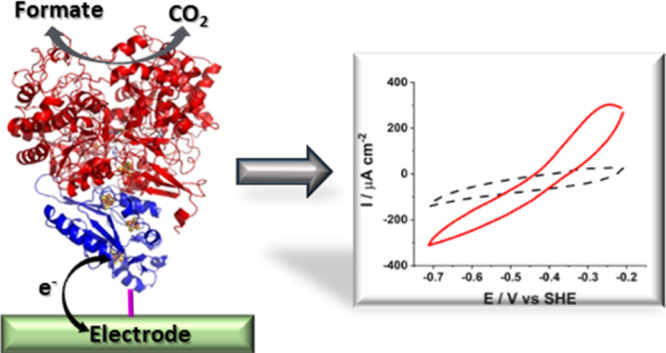- Record: found
- Abstract: found
- Article: found
Bioelectrocatalytic Activity of W-Formate Dehydrogenase Covalently Immobilized on Functionalized Gold and Graphite Electrodes

Read this article at
Abstract

The decrease of greenhouse gases such as CO 2 has become a key challenge for the human kind and the study of the electrocatalytic properties of CO 2-reducing enzymes such as formate dehydrogenases is of importance for this goal. In this work, we study the covalent bonding of Desulfovibrio vulgaris Hildenborough FdhAB formate dehydrogenase to chemically modified gold and low-density graphite electrodes, using electrostatic interactions for favoring oriented immobilization of the enzyme. Electrochemical measurements show both bioelectrocatalytic oxidation of formate and reduction of CO 2 by direct electron transfer (DET). Atomic force microscopy and quartz crystal microbalance characterization, as well as a comparison of direct and mediated electrocatalysis, suggest that a compact layer of formate dehydrogenase was anchored to the electrode surface with some crosslinked aggregates. Furthermore, the operational stability for CO 2 electroreduction to formate by DET is shown with approximately 100% Faradaic yield.
Related collections
Most cited references34
- Record: found
- Abstract: found
- Article: not found
Irreversible climate change due to carbon dioxide emissions.
- Record: found
- Abstract: not found
- Article: not found
Real surface area measurements in electrochemistry
- Record: found
- Abstract: found
- Article: not found